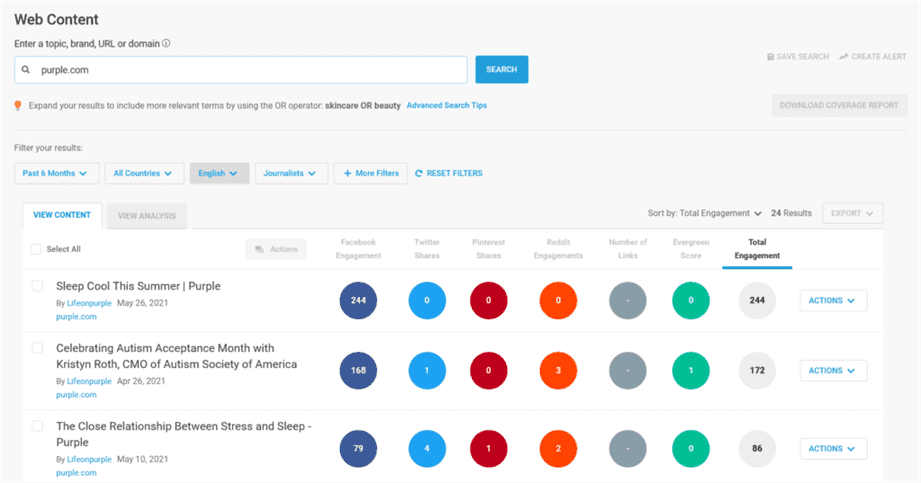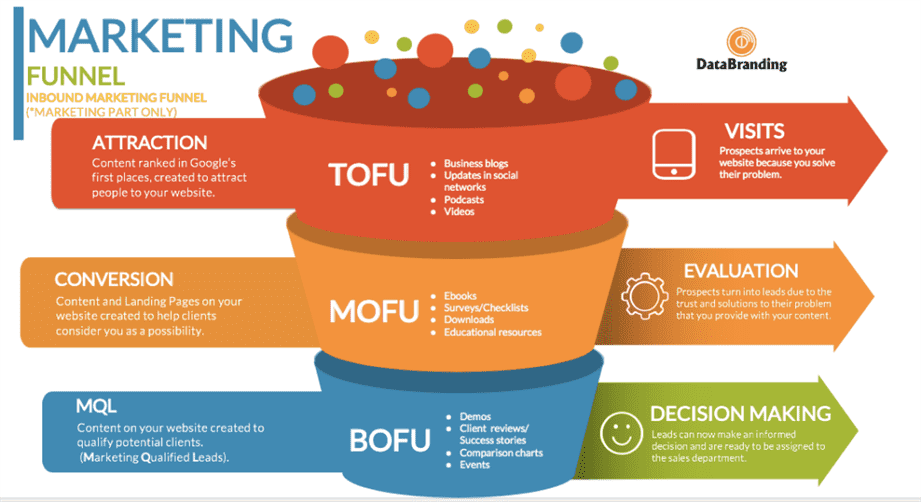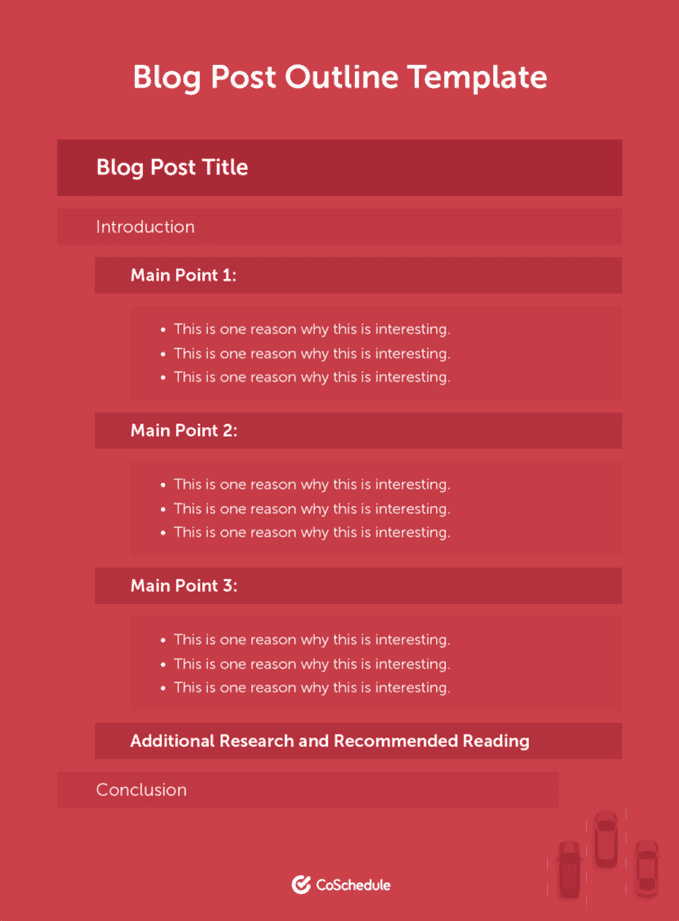Ever heard the saying “good things don’t come easy?” It might not be true all the time, but it certainly is when it comes to content creation. Although high-quality content is a foundational part of any great SEO strategy, it’s also one of the most challenging site elements to churn out on a regular basis.
So to help you set the creative process in motion and start creating better content today, we’ve compiled ten of the most inspiring content creation ideas and tips.
- 1. Brainstorm Catchy Headlines
- 2. Provide Actionable Information
- 3. Focus on Reader Personas
- 4. Pay Attention to Organic Conversations
- 5. Analyze Competitors’ Content
- 6. Don’t Get Hung up on Making Sales
- 7. Use Outlines
- 8. Try a Topic Generator
- 9. Add Images and Numbers
- 10. Incorporate Expert Quotes
1. Brainstorm Catchy Headlines
A good first impression is worth its weight in gold, especially where online content is concerned. After all, internet users now have such an incredible amount of information at their fingertips that there’s no reason they would click on something that doesn’t explicitly intrigue them.
So how can you grab readers’ attention right off the bat? One effective tactic is to use catchy headlines that pique their curiosity.
One study of 100 million headlines found that on Facebook and Twitter, the most-shared headlines tend to contain a few specific elements:
- Numbers, with the number ten garnering the most clicks.
- Trigrams, i.e., three-word phrases such as of the year, X ways to, and the future of.
- Instructional phrases such as need to know and how to make.
- Curiosity-based phrases such as here are the and X reasons why.
- Years, such as X best of 2020 and the top X of 2021.
- Hyperboles such as most, greatest, and best.
In terms of length, the sweet spot appears to be about 11 words or 65 characters, so remember to keep your headlines brief and to the point.
To really take your headlines to the next level, you can try using some of the best free headline optimization tools. Our favorites include:
- CoSchedule’s Headline Analyzer for evaluating potential headlines;
- Capitalize My Title to ensure proper capitalization; and
- Title Generator to automatically create headline ideas based on a single word or phrase.
2. Provide Actionable Information
Take a moment to think about the reasons why you click on headlines. Is it because you might learn something new? Or maybe it’s because you’re interested in reading a unique perspective you haven’t heard before?
No matter the case, you probably go out of your way to click on an article because you think you’ll get something out of it. That applies to your site’s visitors too, and it’s true whether they expect to gain:
- helpful advice;
- new information;
- answers to their questions;
- inspiration;
- satisfaction to their curiosity; or
- any other type of benefit.
So when you’re crafting content for your site, remember to consider what your readers will get out of it. Is your new article full of fluff and sales pitches, or does it contain valuable information and unique takeaways?
By ensuring your content consists of the former instead of the latter, you’ll also ensure that visitors keep coming back for more.
3. Focus on Reader Personas
No matter what kind of audience you’re writing for, it’s crucial to constantly cater your content to their interests, wants, needs, and even personality traits.
To help you do so, you can create reader personas. Similar to a buyer persona, reader personas are simply summaries of your typical (and target) readers based on both real data and fictional details.
Why create reader personas instead of just building your content on raw demographic data? Well, you certainly can execute a content creation strategy based on data alone, but many people find it easier to imagine their audience as real people rather than numbers on a chart.
To determine if reader personas are right for you, consider which is more compelling:
- data showing that your visitors tend to be aged 25–40, typically work at businesses with 10 to 50 employees, mostly live in urban areas, and have an average annual income of $35,000 to $80,000; or
- a reader persona describing Kelly, a 35-year-old financial consultant who lives in Spokane, WA with her spouse, child, and dog, spends her free time hiking, is passionate about healthy eating, and supports her family on an income of $50,000 per year.
If it makes more sense for you to write articles for Kelly rather than for general demographic data, then you’d benefit from creating and focusing on reader personas. To get started, you may find it useful to read Quick Sprout’s guide on the topic.
4. Pay Attention to Organic Conversations
Even for the most creative people, it can be difficult to continually come up with ideas for fresh, new content. One simple yet incredibly effective solution is to simply listen to your audience’s questions, concerns, and conversations as they come up.
To do so, you can try mining ideas from:
- industry Facebook groups;
- relevant subreddits;
- dedicated web forums;
- LinkedIn groups;
- pertinent Twitter hashtags; and
- any other digital (or even in-person) space where people discuss topics related to the type of content you’re looking to create.
You’ll soon find that observing online conversations is one of the best ways to discover what your readers are interested in right now. And if you’d like to know more about their opinions on a particular topic, don’t be afraid to speak up and ask questions.
5. Analyze Competitors’ Content
T.S. Eliot once said that “immature poets imitate; mature poets steal; bad poets deface what they take, and good poets make it into something better, or at least something different.”
That sentiment is as true in the 21st century as it was in 1920, so it comes as no surprise that a widespread (and legitimate) content creation tactic is to analyze your competitors’ content, choose your favorite ideas, and make them better (or at least different, as Eliot stipulates).
For a straightforward, more low-tech approach, simply take a look at your competitors’ blogs, social media profiles, and email newsletters. Make a list of the topics that interest you most (and seem to get the most engagement and positive feedback), modify those topics to suit your unique content strategy, and start writing.
Or if you’d like to dig in deeper and take a more data-driven approach, you can use a service like Semrush to base your analysis on cold, hard facts.
For instance, their Topic Research tool will analyze rivals’ content and provide relevant ideas based on a single root topic—in this case, content creation:
Looking for a free (albeit less in-depth) tool instead? Try Similarweb, a no-cost option that provides an array of metrics based on a single URL.
You can plug in your own site’s URL to see who your competitors are:
And with the free version of BuzzSumo, you can enter either a URL or a specific topic to get a list of the most engaging content for your query:
No matter which tool or tactic you use, your content is sure to improve after taking a cue from your most successful competitors.
6. Don’t Get Hung up on Making Sales
If you’ve read up on marketing strategies, then you might already know about the concept of the inbound marketing funnel. As the following graphic illustrates, it can be broken down into the top of funnel (TOFU), middle of funnel (MOFU), and bottom of funnel (BOFU):
TOFU content is designed to attract new visitors unfamiliar with your brand, MOFU content is designed to help visitors start considering your products or services as a viable option, and BOFU content is designed to turn readers into buying customers.
Crucially, TOFU content should not include any obvious sales pitches, and even MOFU content shouldn’t include anything other than subtle reminders of your brand’s offerings. BOFU content is the only type of content where you’d be wise to overtly encourage visitors to make a purchase, but BOFU content is also the type of content you should be creating the least of.
In fact, some marketers recommend that 70 percent of your content should be TOFU content.
All that is to say that if you’re including a sales pitch in every piece of content you publish, then you may be putting off more customers than you’re attracting. So to ensure that new visitors stick around, ditch the sales pitch, and instead concentrate on offering high-quality content that answers readers’ questions and provides valuable insights.
7. Use Outlines
All writers know how discouraging it is to finally settle on an article topic only to find themselves staring at a blank page with no idea how to start.
For many people, this problem can be solved (or at least helped) with the assistance of some added structure, specifically in the form of an outline. That’s because with an outline, you can spare your brain the task of writing and organizing simultaneously. Instead, you’ll be able to spend a few minutes organizing beforehand so you can focus solely on writing later.
You may even find that the overall writing process goes faster when you’re working from an outline instead of just winging it.
In most cases, an outline for a blog post or similar article will look something like this template from CoSchedule:
For your own outline, remember to add sections for things like a killer meta description, image credits, title tags, and the like. You might also want to include technical elements for your own reference but not for publication, such as target keywords and which part of the marketing funnel you’re writing for.
No matter how rough your outline is, remember that any outline is almost always better than no outline at all.
8. Try a Topic Generator
Struggling to think of unique topics worth writing about? Thanks to the help of some handy tools, we’ve got you covered.
One of those is WebFX’s Blog Post Idea Generator. Just enter a single word or phrase (it could even be as basic as your industry, or your site’s main focus), and you’ll instantly get a suggestion for a click-worthy topic.
Not feeling the topic it’s generated? Just click the refresh button to get a brand new one:
That’s not the only helpful topic generator, either. You can also try out those from HubSpot, topic, Portent, Kparser, and more. With so many useful tools at your disposal, you’ll soon have a long list of fresh and inspiring topics.
9. Add Images and Numbers
We’ve already touched on the efficacy of using numbers in article titles, but it’s worth mentioning that they make wonderful additions to an article’s main body of text too.
That’s because numerals are exceptionally eye-catching—one eye-tracking study found that numerals “often stop the wandering eye and attract fixations, even when they’re embedded within a mass of words that users otherwise ignore.”
So if you’re writing about statistics, you’ll attract more readers’ attention if you write 23 percent rather than twenty-three percent. And if you’re publishing a listicle, you’d be smart to title it 10 reasons why instead of ten reasons why.
You can also use images to make your content significantly more attention-grabbing. As MIT researchers discovered, the human brain can process images in just 13 milliseconds. And in the world of online marketing, that sort of speed has a big impact: on Twitter, Tweets with images get 35 percent more retweets than those without.
To use those facts to your advantage, be sure to always pepper your content with relevant images and numerical statistics when possible. No matter what types of content you’re creating, from social media posts to blog articles, your readers are sure to be more engaged as a result.
10. Incorporate Expert Quotes
One way of achieving the qualities mentioned in Google’s Quality Rater Guidelines is to include expert quotes and statistics in your content where it makes sense to do so. You can start identifying prime places to add quotes by scanning your content for absolute statements.
For instance, let’s say you’re writing an article and state that the vast majority of dogs are fluffy. You can strengthen that statement by adding an expert quote or statistic, thereby proving to readers (and to the search engine powers that be) that you’re trustworthy and aren’t making unfounded claims.
And if you can’t find an expert quote or statistic to back up your statement, you’d be wise to change it to something less absolute, such as many dogs are fluffy.
Going to such lengths may seem tedious, but it will be worth the effort to improve your content, solidify your site’s reputation, and earn readers’ trust.
Truly Exceptional Content Is Right at Your Fingertips
When you’re striving to improve your site’s content, it can be difficult to determine where to start. From headlines to competitor analysis to simply coming up with new topics to write about, high-quality content creation isn’t exactly easy.
But by implementing any of the ten inspiring content creation ideas discussed here, you can start taking your content to the next level (and paving the way to better rankings) today.
Image credits
Screenshots by author / October 2021
DataBranding / September 2019
CoSchedule / September 2019















